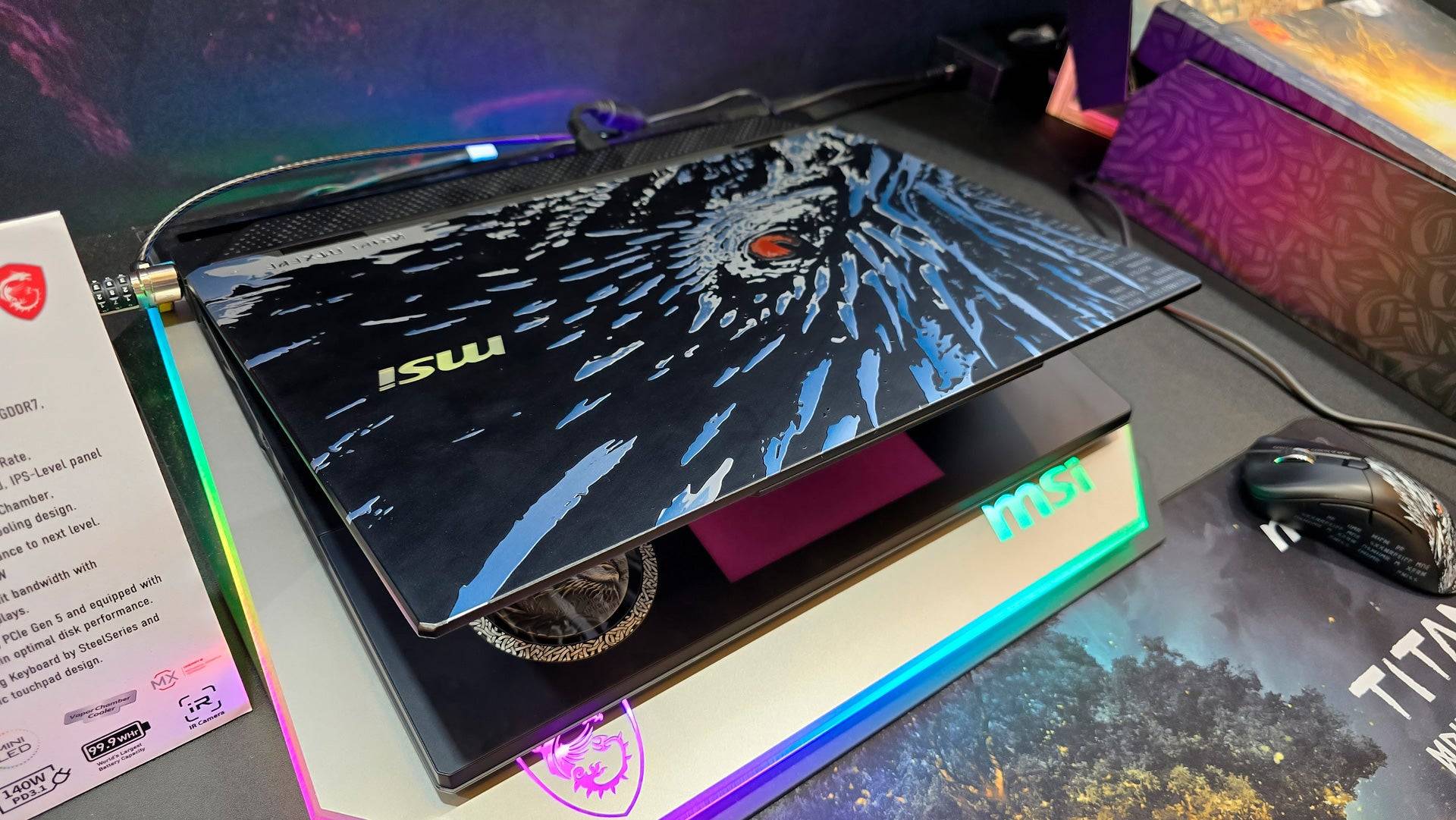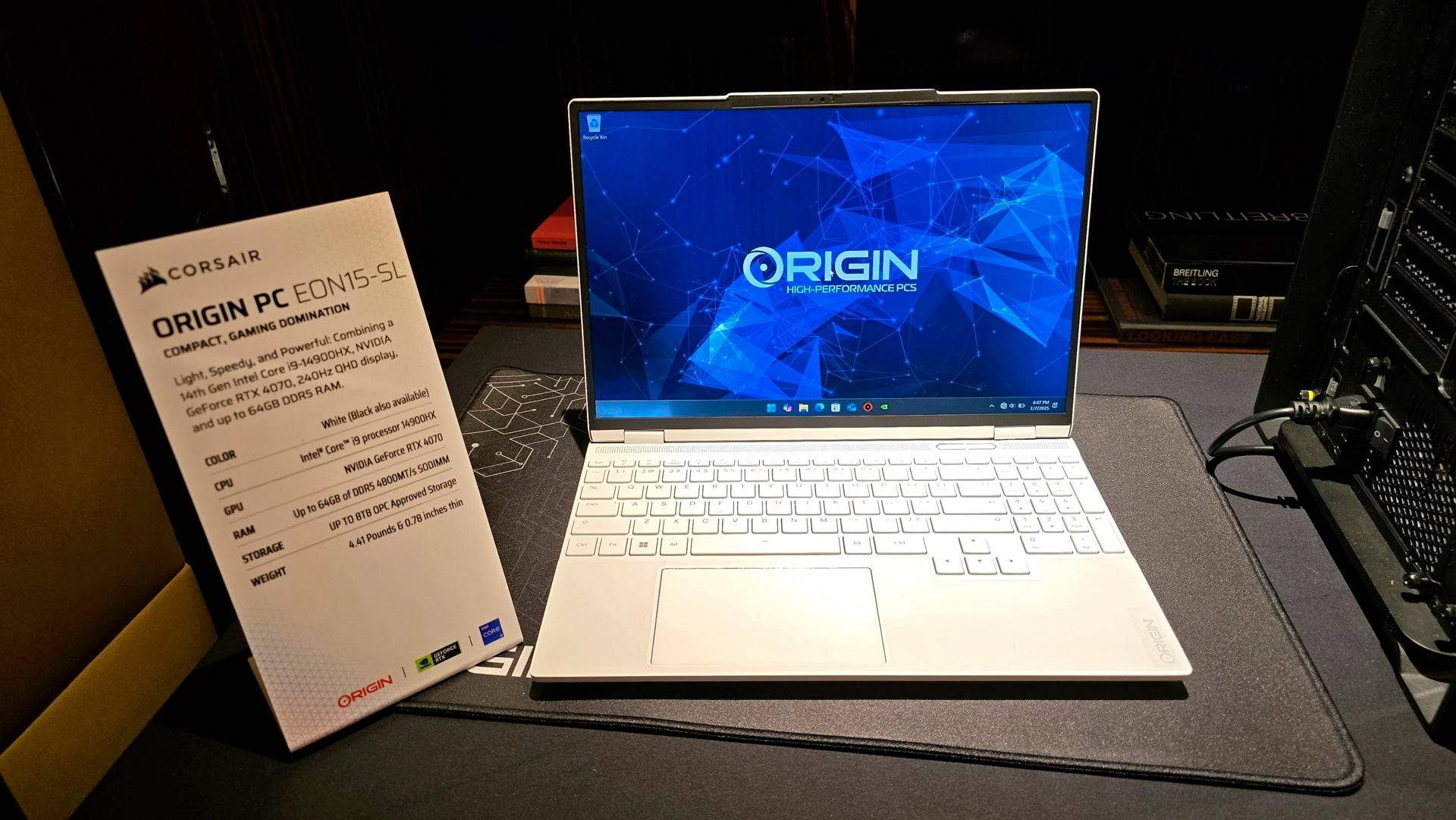CES 2024 showcased a plethora of gaming laptops, revealing key trends shaping the market. This overview highlights the most significant developments.
Diverse Design Language
While gaming laptops have always offered stylistic variety, this year felt particularly distinctive. Manufacturers like Gigabyte and MSI are blurring the lines between productivity and gaming machines, emphasizing aesthetics beyond raw hardware. This translates to a broader spectrum of designs. Some, such as the Gigabyte Aero series, boast sleek, professional aesthetics suitable for any business setting. Conversely, others, like the MSI Titan 18 HX AI Dragonforged Edition, proudly display their gaming pedigree with bold graphics.
 RGB lighting remains a staple, with innovative implementations like wrap-around rings, illuminated keyboards, and even trackpad lighting. Asus's ROG Strix Scar series impressed with its AniME Dot Matrix LED display, capable of displaying text and animations on the lid. While not revolutionary, expect a blend of familiar form factors (ranging from bulky to ultra-thin) and intriguing new design elements.
RGB lighting remains a staple, with innovative implementations like wrap-around rings, illuminated keyboards, and even trackpad lighting. Asus's ROG Strix Scar series impressed with its AniME Dot Matrix LED display, capable of displaying text and animations on the lid. While not revolutionary, expect a blend of familiar form factors (ranging from bulky to ultra-thin) and intriguing new design elements.

The Rise of AI Assistants
AI integration in laptops gained traction last year, but often fell short. This year, several vendors showcased AI assistants designed for seamless PC control without requiring software interaction. One demonstration featured an MSI representative using a chatbot to optimize game settings automatically. While the effectiveness and offline functionality remain to be fully assessed, this technology warrants further observation.
Mini-LED, Rollable Screens, and Beyond
Mini-LED technology is finally making significant inroads into the gaming laptop market. Asus, MSI, and Gigabyte all presented Mini-LED laptops with top-tier specifications and pricing. These models boast over 1,100 local dimming zones, resulting in superior contrast, brightness, and color accuracy. While OLED still holds an edge in contrast, Mini-LED's lack of burn-in risk and higher sustained brightness are compelling advantages.
The ASUS ROG Flow X13 returned with USB4 eGPU support, eliminating proprietary connections. Asus also showcased its Zenbook Duo, a dual-screen productivity laptop. However, Lenovo stole the show with the ThinkBook Plus Gen 6 Rollable, the first commercially available laptop with a rollable OLED display. Its 14-inch screen expands by 2.7 inches with a button press. While its initial iteration presents durability concerns, it represents a significant step forward in display technology.

Ultrabooks Gaining Ground in Gaming
Ultrabooks are increasingly prevalent, even within gaming lines. Major manufacturers offer thin, light, and premium gaming laptops, often adopting minimalist aesthetics. Gigabyte's revamped Aero series exemplifies this trend. These devices cater to users who don't require maximum settings in the latest games, offering a balance of portability and productivity. The ability to add dedicated graphics cards (as demonstrated by the Asus TUF Gaming A14) further enhances their versatility.
 Furthermore, advancements in integrated graphics from AMD and Intel, coupled with technologies like AMD FidelityFX Super Resolution and Intel XeSS, allow for surprisingly capable gaming performance, potentially reducing the reliance on dedicated graphics cards like the RTX 4050M. Cloud gaming services like Xbox Cloud Gaming and Nvidia GeForce Now also provide viable alternatives, further expanding options for gamers.
Furthermore, advancements in integrated graphics from AMD and Intel, coupled with technologies like AMD FidelityFX Super Resolution and Intel XeSS, allow for surprisingly capable gaming performance, potentially reducing the reliance on dedicated graphics cards like the RTX 4050M. Cloud gaming services like Xbox Cloud Gaming and Nvidia GeForce Now also provide viable alternatives, further expanding options for gamers.
The gaming laptop landscape is evolving rapidly, and we will continue to explore these developments throughout the year. Share your thoughts and observations in the comments below!

 Latest Downloads
Latest Downloads
 Downlaod
Downlaod




 Top News
Top News








